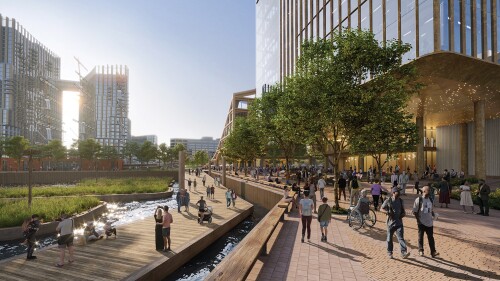Every dollar invested by the federal government in pre-disaster mitigation saves society $6 in post-disaster recovery costs, according to a recent report, Natural Hazard Mitigation Saves, published by the National Institute of Building Sciences. The study also found that for every dollar spent on improving building codes to better withstand natural disasters, society saved $4.
The report looked at more than 20 years of mitigation grants from federal sources including the Federal Emergency Management Agency, the U.S. Department of Housing and Urban Development, and the U.S. Economic Development Administration.
Because of hurricanes Harvey, Irma, and Maria and the California wildfires, 2017 was the most expensive year for natural disasters in U.S. history, with an estimated $306.2 billion in cumulative damage. The report notes that “given the rising frequency of disaster events and the increasing cost of disaster recovery across the nation, mitigation actions are crucial for saving money, property, and, most importantly, lives.”
The report studied four types of natural hazards—hurricanes, coastal and river flooding, earthquakes, and fires occurring at the wildland/urban interface—and determined the cost/benefit ratios for different types of investment.
Some key findings:
- Building beyond code requirements offered the most favorable cost/benefit ratio when addressing storm surge; and
- Federal investments in mitigation had the most favorable cost/benefit ratio when addressing river flooding.
Activities designed to reduce disaster losses also may spur job growth and other forms of economic development, the report says. For example:
- Implementing the two mitigation strategies studied would be likely to prevent 600 deaths, 1 million nonfatal injuries, and 4,000 cases of post-traumatic stress disorder.
- Designing new buildings to exceed the 2015 International Building Code would likely result in the creation of 87,000 new, long-term jobs and a roughly 1 percent increase in uses of domestically produced construction material.
ULI members active on the topic of resilience praised the report. Elizabeth Shreeve, a principal at the SWA design and planning firm, says, “This study provides essential metrics to support the work of our clients preparing for climate change.” Many of SWA’s projects have incorporated resilience into their design and development. Two open-space projects in Houston, for example—Exploration Green and Buffalo Bayou Park—weathered Hurricane Harvey and helped mitigate the impact of property damage to their surroundings. Specifically, 100 million gallons (379 million liters) of water were detained in Exploration Green’s ponds during the extreme weather event, which kept an estimated 200 houses from flooding. “Projects like these provide multiple benefits, and we need exactly this type of evidence to make the case for long-term resilience versus short-term cost savings,” Shreeve says.
James Murley, chief resilience officer for Miami–Dade County, notes that the county has been making these pre-disaster investments in resilience for some time now. “We recognize that making relatively small investments upfront in resilience measures saves taxpayer dollars over the lifetime of any of our infrastructure projects. That is why we’re investing in building higher and hardening our new facilities, such as the water and sewer infrastructure.”
The business case for investing in mitigation has been growing. In December, Moody’s Investors Service warned cities that they needed to invest in climate change adaptation or risk a downgrade in their bond ratings. In Australia and the European Union, institutional investors are pushing for more hazard mitigation, and regulators are considering action against banks and insurers that do not begin incorporating climate adaptation into their investment and policy decisions.
See other case studies at ULI’s Returns on Resilience web site.





